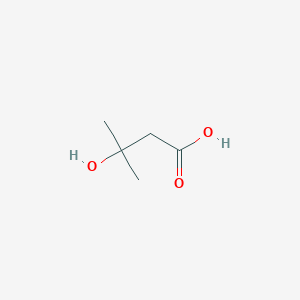Details of Metabolite
| Full List of Protein(s) Regulating This Metabolite | ||||||
|---|---|---|---|---|---|---|
| Apolipoprotein (Apo) | ||||||
| Apolipoprotein A-II (APOA2) | Click to Show/Hide the Full List of Regulating Pair(s): 1 Pair(s) | |||||
| Detailed Information |
Protein Info
 click to show the details of this protein click to show the details of this protein
|
|||||
| Regulating Pair |
Experim Info
 click to show the details of experiment for validating this pair click to show the details of experiment for validating this pair
|
[1] | ||||
| Introduced Variation | Mutation (-265T >C(rs5082)) of APOA2 | |||||
| Induced Change | 3-Hydroxyisovaleric acid concentration: decrease (FC = 0.72) | |||||
| Summary | Introduced Variation
|
|||||
| Disease Status | Obesity [ICD-11: 5B81] | |||||
| Details | It is reported that mutation (-265T >C(rs5082)) of APOA2 leads to the decrease of 3-hydroxyisovaleric acid levels compared with control group. | |||||
| Hydrolases (EC 3) | ||||||
| Sulfatase sulf-1 (SULF1) | Click to Show/Hide the Full List of Regulating Pair(s): 1 Pair(s) | |||||
| Detailed Information |
Protein Info
 click to show the details of this protein click to show the details of this protein
|
|||||
| Regulating Pair |
Experim Info
 click to show the details of experiment for validating this pair click to show the details of experiment for validating this pair
|
[2] | ||||
| Introduced Variation | Knockdown (shRNA) of SULF1 | |||||
| Induced Change | 3-Hydroxyisovaleric acid concentration: increase (FC = 1.78 / 2.27) | |||||
| Summary | Introduced Variation
|
|||||
| Disease Status | Ovarian cancer [ICD-11: 2C73] | |||||
| Details | It is reported that knockdown of SULF1 leads to the increase of 3-hydroxyisovaleric acid levels compared with control group. | |||||
If you find any error in data or bug in web service, please kindly report it to Dr. Zhang and Dr. Mou.

